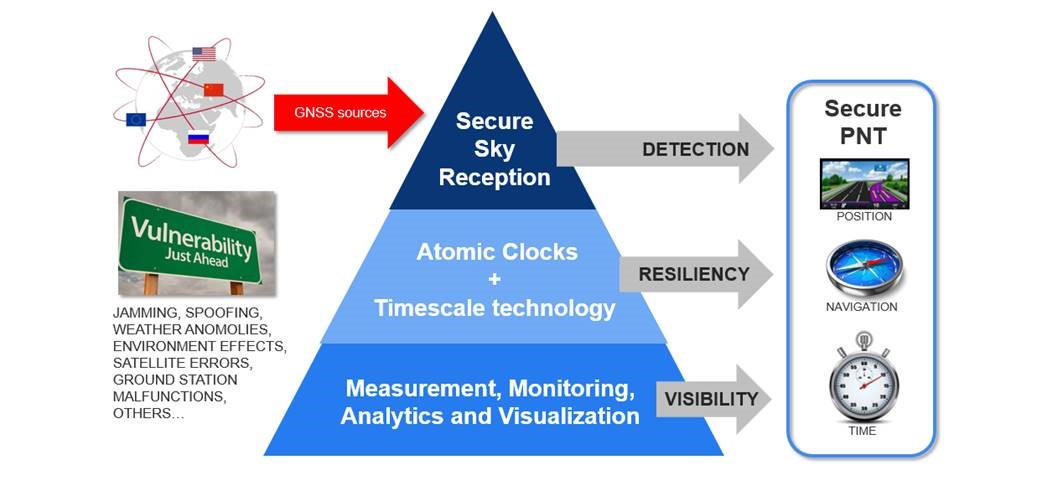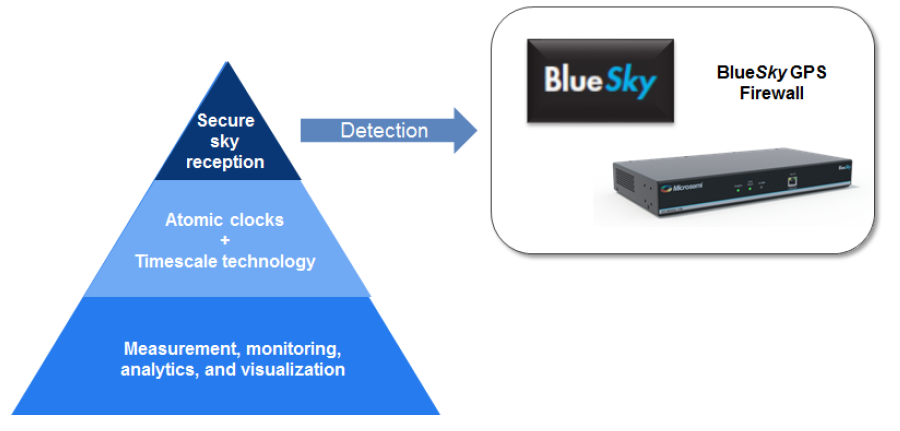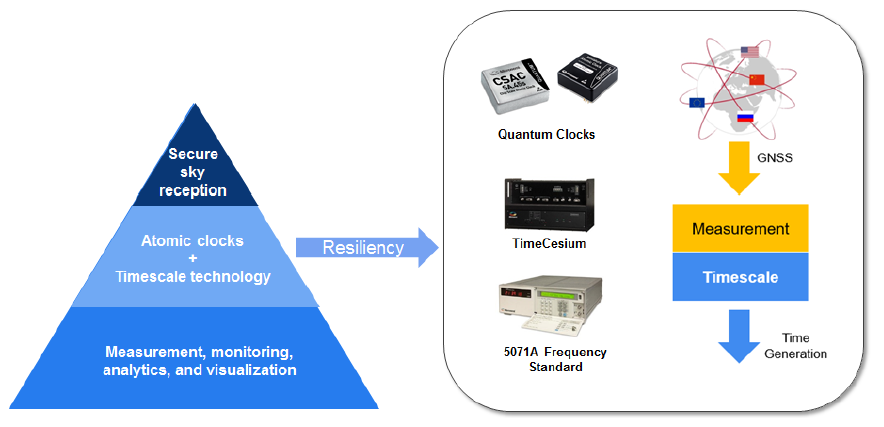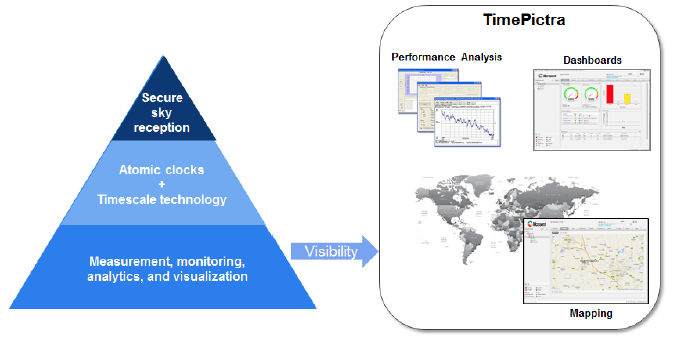GPS Threat Protection and Security
Overview
GPS Spoofing and Jamming Vulnerabilities in the real world:
Security and protection of a network and Position, Navigation and Time (PNT) application is always a high priority and GPS technology is the key to deployment of these applications. The vulnerability of GPS to interference is not a new phenomenon. GPS signals are extremely weak and highly vulnerable to jamming and spoofing resulting in partial or complete loss of GPS signal. There are certain natural phenomenon like solar flares and other physical environmental conditions which interfere with GNSS signals.

However, these days more and more instances of jamming, complex jamming, and spoofing are surfacing across the globe. The frequency of these events is growing rapidly as reported in the news. It is driven by geopolitical tension in many parts of the world and there are concerns about the next battle front of cyberspace. But there are many other building examples of spoofing (e.g., Uber drivers spoof to change location of their vehicles, Pokemon GO spoofing, intentional drone interference, Fleet tracking interruption, etc….) that are becoming more commonplace and have potential to wreak havoc on critical infrastructure and applications we take for granted that are dependent upon reliable and accurate GPS signal.
Securing Position, Navigation and Time (PNT) as used by Critical Infrastructure:
GNSS-based errors, whether intentional or unintentional, can quickly impact a vast geography and widely dispersed locations. Additionally, a large variety of operational environments must be accounted for that not only includes outside deployment with a clear view of the sky, but highly obstructed locations, urban canyons, and in-building and in-cabinet scenarios.This solution for securing PNT focuses on a network approach based on layers of resiliency that can be deployed cost effectively across infrastructure with 10s, 100s, 1000s, or even 10,000s of nodes. These layers are built using a broad array of technologies, including GNSS anti-jamming and anti-spoofing technology, time transport protocols, atomic clocks, and software management and monitoring.
Resources
Blog Articles / Updates
| Topic | Author | Date Published |
| The invisible Utility - PNT (Position, Navigation and Timing) | Greg Wolff | 22-Mar., 2018 |
| If you can't measure it, you can't fix it | Greg Wolff | 22-Mar., 2018 |
| Autonomous Clocks and TimeScale Technology | Greg Wolff | 22-Mar., 2018 |
| Miniature Atomic Clocks | Greg Wolff | 22-Mar.,2018 |
| Use a GPS Firewall for Secure Sky Reception | Greg Wolff | 22-Mar., 2018 |
| Securing Position, Navigation and Timing (PNT) as used by Critical Infrastructure | Greg Wolff | 22-Mar., 2018 |
| GNSS Errors impacting Position, Navigation and Timing (PNT) | Greg Wolff | 22-Mar., 2018 |
| Critical Infrastructure Expansion | Greg Wolff | 22-Mar., 2018 |
| Protecting Critical Infrastructure - Time may not be on your side | Greg Wolff | 22-Mar., 2018 |
| Improved Immunity from GPS Jamming and Spoofing for Military Systems | Paul Skoog | 14-Dec., 2017 |
| BlueSky GPS Firewall - Breakthrough technology to secure against GPS Jamming and Spoofing | Paul Skoog | 13-Dec., 2017 |
White Papers
Other Collateral
| Topic | Type of Document | |
| How NTP Servers with Atomic Clocks Protect Against GPS Jamming/Denial to Maintain Accurate Network Time | Webinar Presentation | |
| BlueSky GNSS Firewall Brochure | Product Brochure | |
| Customer Webinar Mitigating GPS Vulnerabilities in Mission Critical Applications | Webinar Presentation | |
| Securing GNSS with PTP and SyncE | Webinar Presentation | |
| Mitigating GNSS Vulnerabilities in Commercial Network Timing Apps | Webinar Presentation | |
| Multi-GNSS Constellation Technology SyncServer S6xx Series | Application Note | |
Videos & Webinar
| Microsemi BlueSky GNSS Firewall - Demonstration of GPS Protection against Jamming and Spoofing Attacks | Microsemi BlueSky GNSS Firewall protects Critical Infrastructure from loss of GPS threats (Jamming and Spoofing) | |
| World's first Chip Scale Atomic Clock (CSAC) by Microsemi is used for holdover applications in harsh environments where there is a possibility of losing the GPS signal. | ||


 The solution stack starts with the ability to support sky GNSS signal reception in a highly secure manner. The vulnerability of these GNSS systems to various signal incidents is well documented and their proliferation of GNSS systems has embedded these vulnerabilities into critical national and corporate infrastructures that rely upon GNSS-delivered PNT for daily operations. Such widespread deployment of GNSS makes it impractical to replace all the fielded systems in a timely or cost-effective manner. Microsem
The solution stack starts with the ability to support sky GNSS signal reception in a highly secure manner. The vulnerability of these GNSS systems to various signal incidents is well documented and their proliferation of GNSS systems has embedded these vulnerabilities into critical national and corporate infrastructures that rely upon GNSS-delivered PNT for daily operations. Such widespread deployment of GNSS makes it impractical to replace all the fielded systems in a timely or cost-effective manner. Microsem As timing and synchronization has grown in importance within Critical Infrastructure networks, centralized management and visibility of this vital function has become essential to network operations. Applications such as 4G/LTE (and upcoming 5G) mobile networks, Smart Grid power station control, and high-frequency trading have increased the requirements for accurate and precise timing. As a result, centralized visibility and management of network timing has become essential for ensuring reliable network performance and the successful delivery of services.
As timing and synchronization has grown in importance within Critical Infrastructure networks, centralized management and visibility of this vital function has become essential to network operations. Applications such as 4G/LTE (and upcoming 5G) mobile networks, Smart Grid power station control, and high-frequency trading have increased the requirements for accurate and precise timing. As a result, centralized visibility and management of network timing has become essential for ensuring reliable network performance and the successful delivery of services.
 Critical Infrastructure operators rely on holdover clocks to provide valuable operational benefits and for service continuity during situation when the GNSS Failure occurs. There are a wide variety of oscillator types in use today that have been deployed for holdover, each providing a different performance/cost profile. It’s important to have a clear understanding of the accuracy and period of time that the holdover is needed for and the ability of the holdover clock to maintain the needed performance given changing environmental conditions, particularly temperature variations.
Critical Infrastructure operators rely on holdover clocks to provide valuable operational benefits and for service continuity during situation when the GNSS Failure occurs. There are a wide variety of oscillator types in use today that have been deployed for holdover, each providing a different performance/cost profile. It’s important to have a clear understanding of the accuracy and period of time that the holdover is needed for and the ability of the holdover clock to maintain the needed performance given changing environmental conditions, particularly temperature variations.
